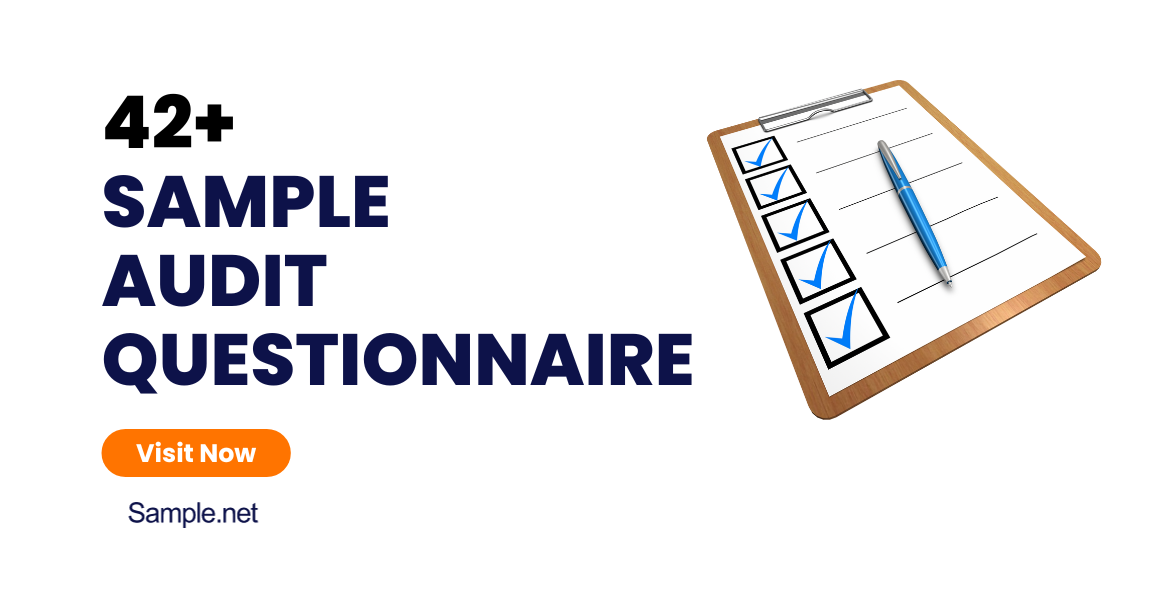A food questionnaire can be used for a lot of purposes by a variety of businesses in the food service, hospitality, catering, and restaurant industry. Developing a food questionnaire is…
continue reading50+ Sample Employee Questionnaires Templates
Establish a healthy and thriving work environment for staff members with the help of the following examples of employee questionnaires.

Compensation Survey Questionnaire
Find out if employees are aware of the compensations of their net salary using a questionnaire.
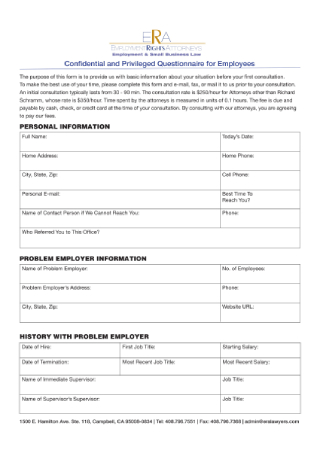
Confidential and Privileged Questionnaire for Employees
Collect sensitive data from employees through a questionnaire.
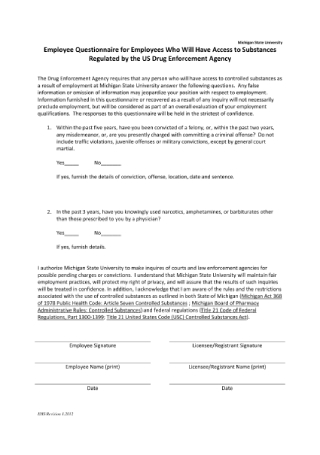
Controlled Substance Authorized User Questionnaire
Require employees with access to controlled substances to respond to the questionnaire provided.

Corporate Culture Questionnaire
Gain a better understanding of your company culture with a questionnaire.
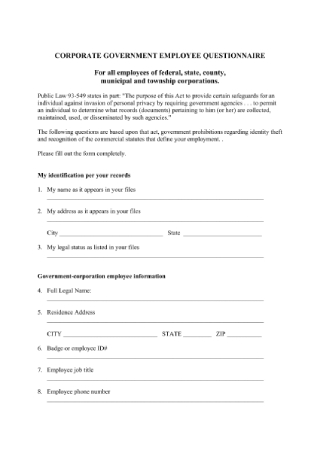
Corporate Government Questionnaire
Provide employees with safeguards against privacy invasion with a questionnaire.
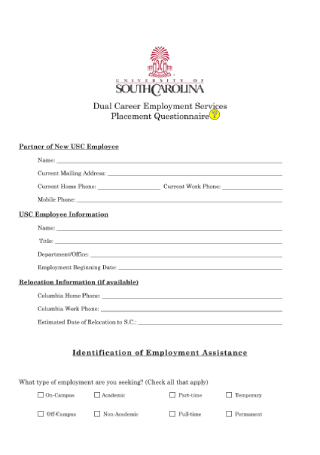
Dual Career Employment Services Place Questionnaire
Attract and retain exceptional employees through a dual-career questionnaire.

Employee and Family Medical Questionnaire
Use a questionnaire to obtain employee information for granting medical insurance.
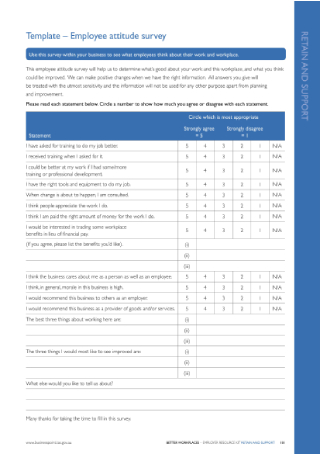
Employee Attitude Survey Questionnaire
Maintain a happy workplace by fielding questionnaires to acquire survey results.
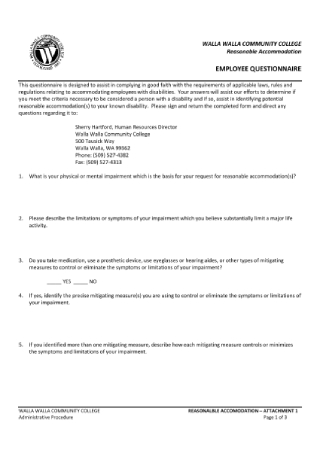
Employee Disability Questionnaire
Aid doctors in determining an employee’s permanent disability using a questionnaire.
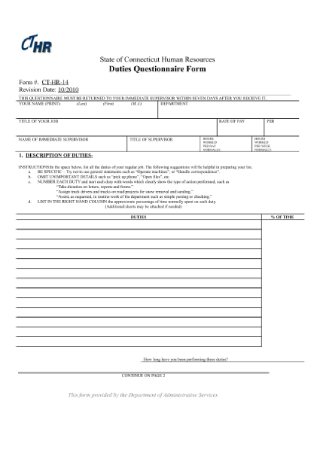
Employee Duties Questionnaire
Evaluate job responsibilities using the information garnered from a questionnaire.
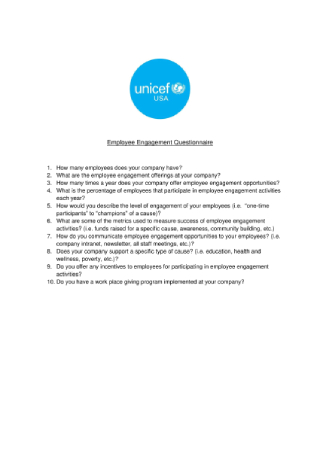
Employee Engagement Questionnaire
Create a questionnaire to analyze the connection the organization has with its employees.
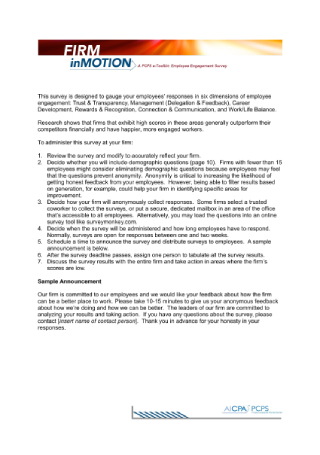
Employee Engagement Survey Questionnaire
Identify problem areas in your management by conducting a survey.
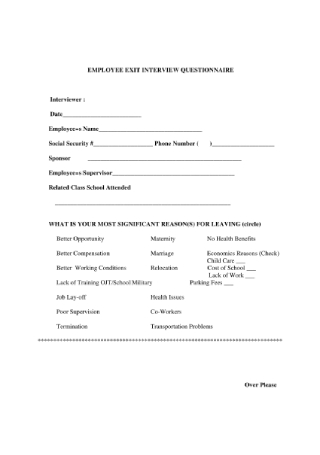
Employee Exit Interview Questionnaire
Examine employee retention and turnover using an exit interview questionnaire.
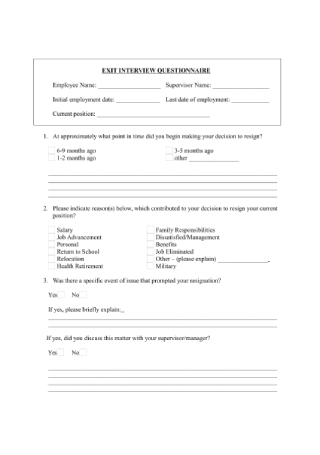
Employee Exit Questionnaire
Allow outgoing employees to express their employment opinions with an exit questionnaire.
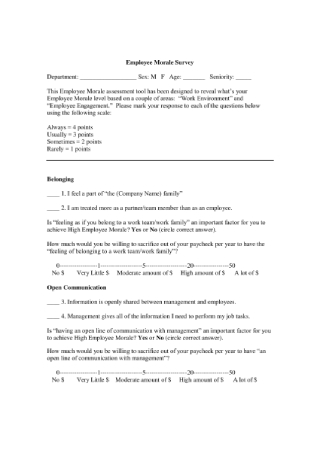
Employee Morale Survey Questionnaire
See how employees feel about the organization using the given survey questionnaire.
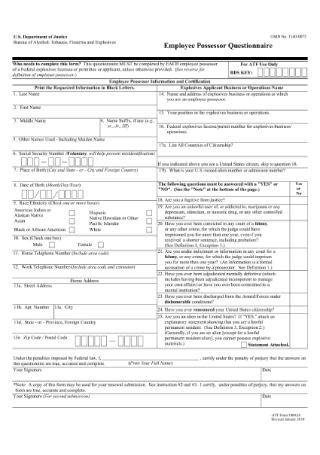
Employee Possessor Questionnaire
Determine an employee’s eligibility to engage in explosives operations with this sample.

Employee Recognition Questionnaire
Learn about the type of recognition your employees desire with the help of a questionnaire.
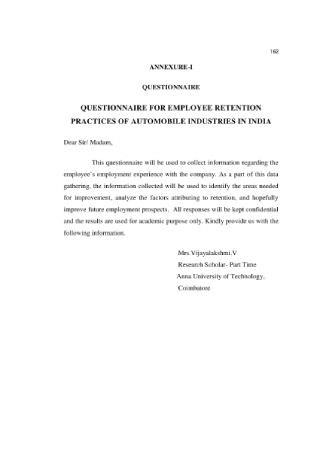
Employee Retention Questionnaire
Improve employee performance and reduce turnover rates by utilizing a questionnaire.
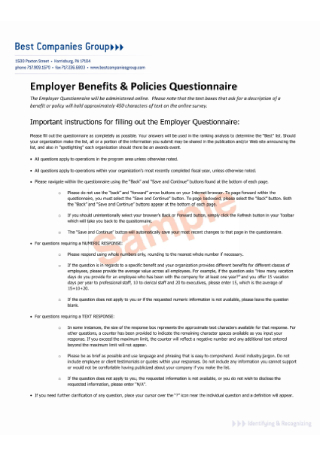
Employer Benefits and Policies Questionnaire
Gauge employee perception on HR benefits and policies with a questionnaire.

Employment Background Questionnaire
Administer a background check on applicants and new hires through a questionnaire.
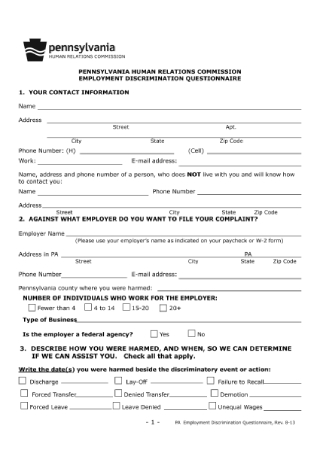
Employment Discrimination Questionnaire
Handle cases of employee discrimination appropriately with a questionnaire.

Employment Relationship Questionnaire
Determine an employee’s suitability for benefits with the help of a questionnaire.
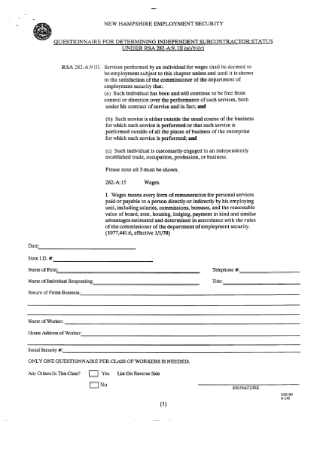
Employment Security Questionnaire
Settle an independent subcontractor’s status with the help of a questionnaire.
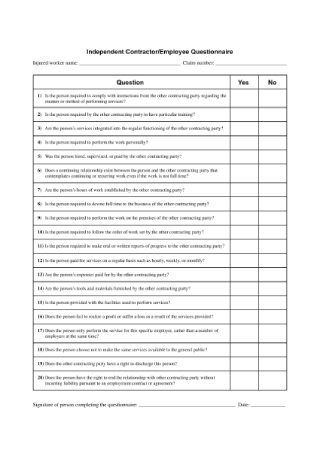
Independent Contractor or Employee Questionnaire
Verify whether an individual is an independent contractor or an employee using this sample.

Individual Stress Questionnaire
Assess the stress level of employees by making use of a questionnaire.
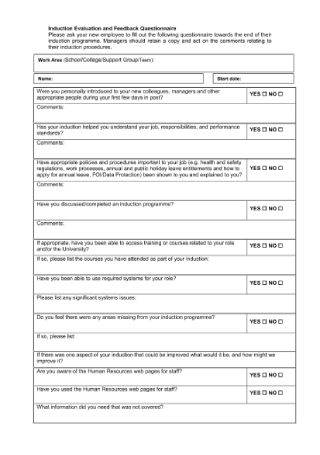
Induction Evaluation and Feedback Questionnaire
Gain feedback from employees for the continuous improvement of your induction programs.
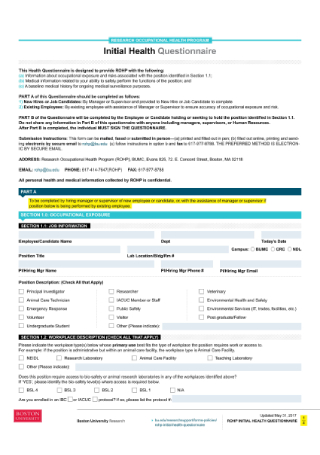
Initial Health Questionnaire
Confirm an employee’s capacity to perform the functions of a position with a questionnaire.
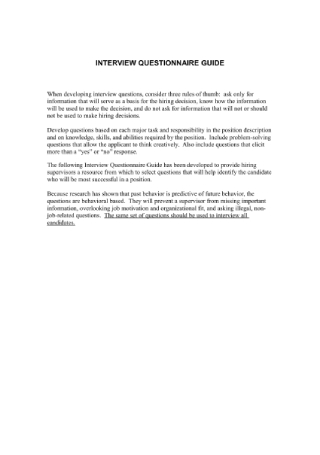
Interview Questionnaire Guide
Discuss the topics and issues to talk about in an interview using the sample provided.
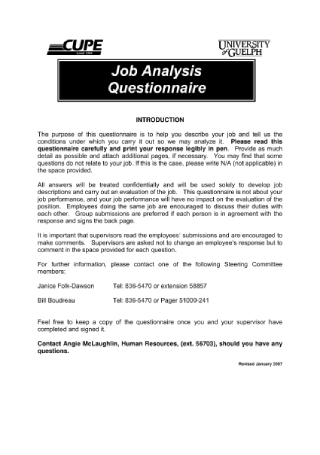
Job Analysis Questionnaire
Evaluate a person’s job skill level with the use of an analysis questionnaire.

Job Evaluation Position Questionnaire
Develop a clear understanding of each job position through the given questionnaire.
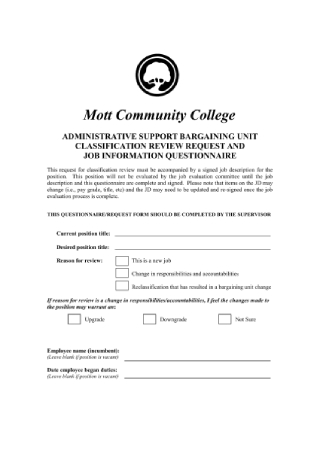
Job Information Questionnaire
Gather information about the content and scope of a job using a questionnaire.
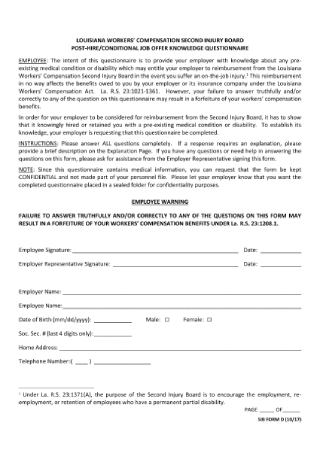
Job Offer Knowledge Questionnaire
Obtain knowledge about an employee’s preexisting medical condition through this sample.
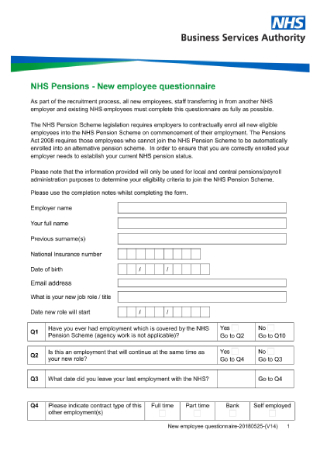
New Employee Questionnaire
Get to know your newest batch of employees by letting them fill out your questionnaire.
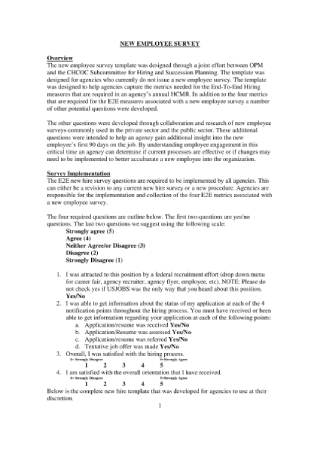
New Employee Survey Questionnaire
Make sure your new hires are taken care of with the help of a survey questionnaire.
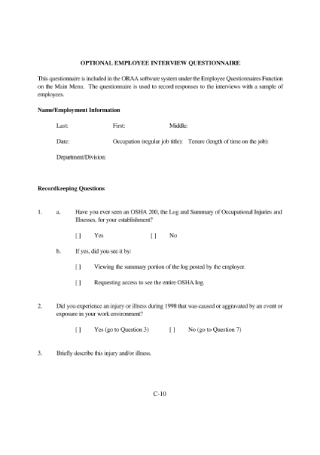
Optional Employee Interview Questionnaire
Record the responses generated from employee interviews using a written questionnaire.

Organizational Survey Questionnaire
Gain valuable input on your organization with the help of an employee questionnaire.

Pensionable Employment Questionnaire
Capture employee details regarding pension eligibility using this questionnaire sample.
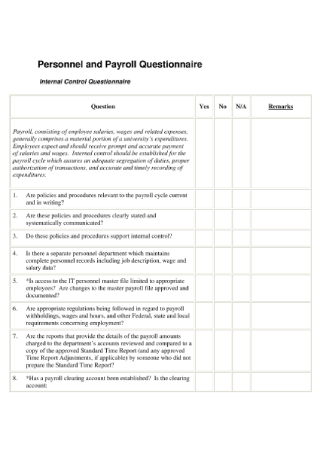
Personnel and Payroll Questionnaire
Identify risk factors that concern employee compensation via a questionnaire.
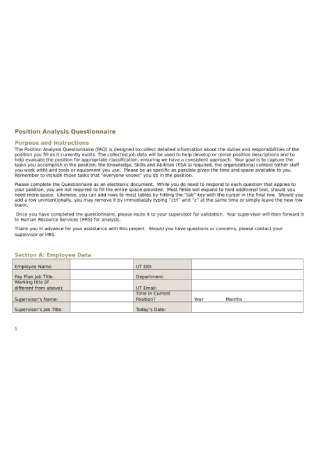
Position Analysis Questionnaire
Design a questionnaire to collect information about the duties and responsibilities of a position.

Pre-Employment Questionnaire
Screen potential employees accordingly with the help of a questionnaire.
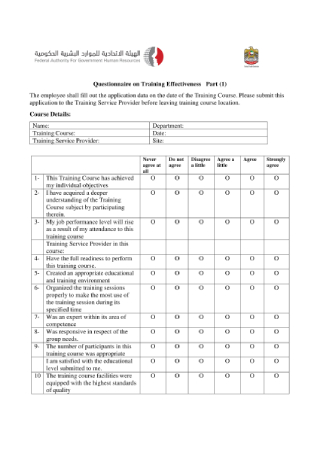
Questionnaire on Training Effectiveness
Measure the success of your training program with the help of a questionnaire.
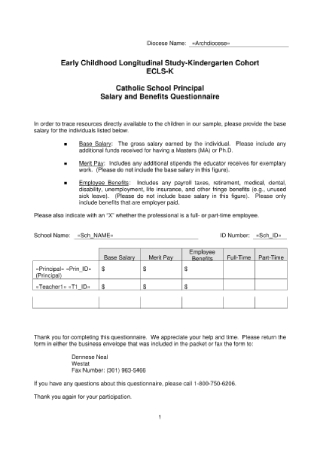
Salary and Benefits Questionnaire
Evaluate the satisfaction level of employees with the use of a questionnaire.
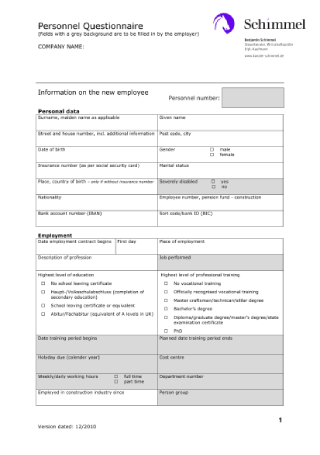
Simple Personnel Questionnaire
Craft a personnel questionnaire with ease using this sample.
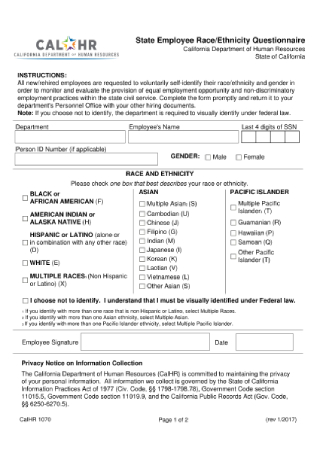
State Employee Ethnicity Questionnaire
Ensure equal employment opportunities and practices through a questionnaire.

Team Effectiveness Questionnaire
Examine team performance by using a questionnaire for your study.
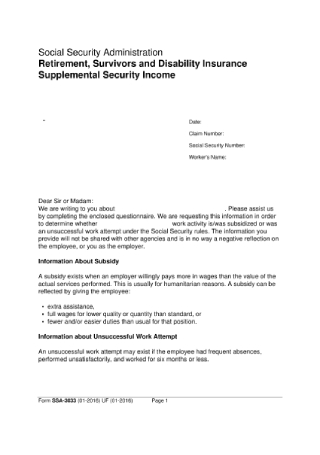
Work Activity Questionnaire
Use this to determine whether work activity was subsidized under Social Security rules.

Work Performance Questionnaire
Monitor work performance of staff members using the questionnaire provided.

Workplace Safety and Health Questionnaire
Identify safety and health hazards in the workplace through this sample.
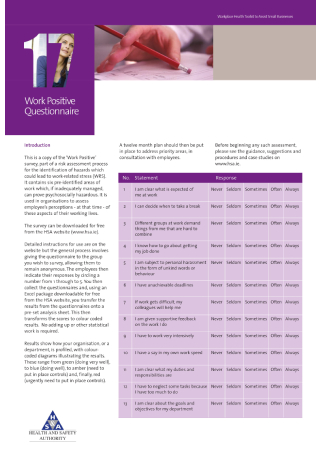
Work Positive Questionnaire
Establish a positive work environment with the help of a questionnaire.
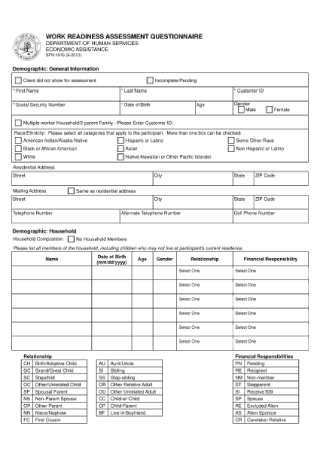
Work Readiness Assessment Questionnaire
Assess the readiness of employees by utilizing a questionnaire.
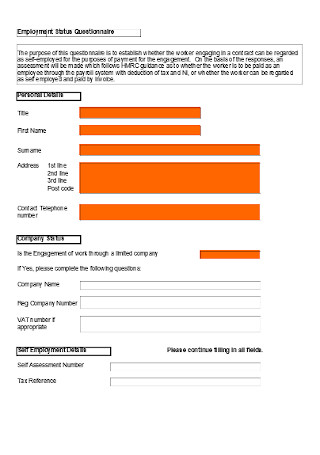
Employement Status Questionnaire Template
download now
Employee Questionnaires: Why Do You Need One?
A well-conducted survey can do a lot for a company and its people. Not only can it help you focus on areas for improvements, but it can also boost organizational performance for better service and sales. This is a chance for HR to gain the trust and loyalty of employees in an attempt to strengthen the workforce. Other reasons why employment questionnaires are still one of the most effective enhancement tools include the following:
Types of Employee Questionnaires
There are several kinds of questionnaires tailored to measure the factors affecting employee morale. Each of these questionnaires plays a key role in revealing important data for the organization’s continuous growth and development. The following items are just a few examples of employee questionnaires prepared by company leaders:
Tips for Getting Employee Feedback
There are many types of survey questionnaires designed to gather employee feedback for the company’s continuous efforts to expand and improve. Regardless of which one you use, getting the right information from your employees is no walk in the park. Listed below are a few tips to make sure your employee questionnaire serves its purpose.
Employee Questionnaire FAQs
We answer some of your common concerns regarding employee questionnaires below.
How do you get employees to complete a survey questionnaire?
You might have a flawlessly designed questionnaire to measure and improve engagement and performance across the entire workforce, but none of that matters until your employees actually participate in the survey. While it’s much easier to get people to answer a questionnaire that they’re obliged to respond to, most employees pay little attention to the surveys that are conducted for internal research. You need to be creative with your campaign if your aim is to encourage people to give your questionnaire a second glance. Marketing the survey, having your leadership team on board the initiative, and explaining the benefit of the survey to the rest of the team are just some ways to acquire valuable data.
What to do with the results of a questionnaire?
Now that you’ve obtained the information needed for the study, the first thing you’d want to do is interpret the results. There are many ways to analyze this data, depending on your main objectives for the survey. This is often a collaborative effort between managers of each team to identify areas on which to focus. Discussing these areas together will enable you to brainstorm on ideas for improvement. This allows the organization to take another step forward into implementing decisions for long-term advancement.


